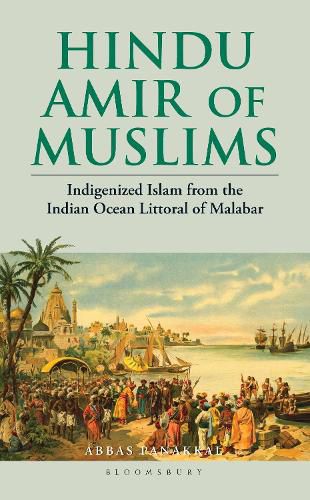Readings Newsletter
Become a Readings Member to make your shopping experience even easier.
Sign in or sign up for free!
You’re not far away from qualifying for FREE standard shipping within Australia
You’ve qualified for FREE standard shipping within Australia
The cart is loading…






This book explores the pivotal role of integration in shaping Indigenized Islam in 16th-century Malabar, a region along the Indian Ocean's coastal fringes. Through a detailed examination of popular traditions, primary texts, and archaeological and architectural artifacts, this study seeks to unravel the historical processes that facilitated the fusion of Islam within the local vernacular context. Among the diverse Muslim ethnic groups of Malabar, indigenous customs and traditions were intricately woven into their religious identity, contributing to a distinctive, inclusive character. The study highlights phenomena such as the recognition of the Hindu King Zamorin of Calicut as the Amir of the Muslims and the advocacy by Muslim scholars and leaders for military Jihad to protect non-Muslim rulers' sovereignty. These elements reflect the complex nature of Indigenized Islam. Central to this localized practice was the veneration of indigenous shrines and the organization of ceremonial processions to Sufi enclaves, marking a departure from conventional Arab Cultural Islam. These practices illustrate the dynamic interplay between local elements and the evolving Islamic framework. The introduction of Islam to the Indian subcontinent was significantly shaped by natural rhythms and commercial dynamics, resulting in a unique trajectory within Islamic history. Muslim communities in the Indian Ocean's bustling port cities embraced this trajectory, disseminating core tenets of faith and transforming distinct confessional entities into integrated collectives. This volume navigates the various pathways through which Malabar Islam emerged as a unique blend of indigenous cultural expressions within the broader Islamic heritage. It enhances our understanding of historical interactions, cultural fusion, and religious dynamics, offering a nuanced portrayal of the transformative forces shaping Islamic practices and identities.
$9.00 standard shipping within Australia
FREE standard shipping within Australia for orders over $100.00
Express & International shipping calculated at checkout
This book explores the pivotal role of integration in shaping Indigenized Islam in 16th-century Malabar, a region along the Indian Ocean's coastal fringes. Through a detailed examination of popular traditions, primary texts, and archaeological and architectural artifacts, this study seeks to unravel the historical processes that facilitated the fusion of Islam within the local vernacular context. Among the diverse Muslim ethnic groups of Malabar, indigenous customs and traditions were intricately woven into their religious identity, contributing to a distinctive, inclusive character. The study highlights phenomena such as the recognition of the Hindu King Zamorin of Calicut as the Amir of the Muslims and the advocacy by Muslim scholars and leaders for military Jihad to protect non-Muslim rulers' sovereignty. These elements reflect the complex nature of Indigenized Islam. Central to this localized practice was the veneration of indigenous shrines and the organization of ceremonial processions to Sufi enclaves, marking a departure from conventional Arab Cultural Islam. These practices illustrate the dynamic interplay between local elements and the evolving Islamic framework. The introduction of Islam to the Indian subcontinent was significantly shaped by natural rhythms and commercial dynamics, resulting in a unique trajectory within Islamic history. Muslim communities in the Indian Ocean's bustling port cities embraced this trajectory, disseminating core tenets of faith and transforming distinct confessional entities into integrated collectives. This volume navigates the various pathways through which Malabar Islam emerged as a unique blend of indigenous cultural expressions within the broader Islamic heritage. It enhances our understanding of historical interactions, cultural fusion, and religious dynamics, offering a nuanced portrayal of the transformative forces shaping Islamic practices and identities.